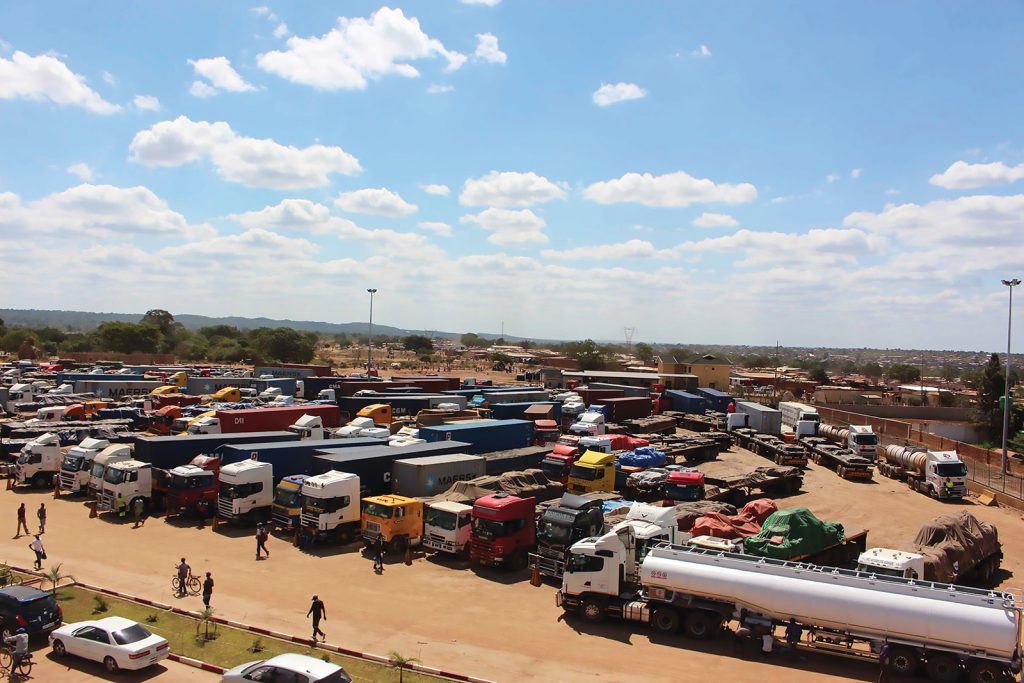COMESA hook $9.9 billion trade inflows:
How Zambia Can Leverage Intra-Regional Connections
In recent years, the Common Market for Eastern and Southern Africa (COMESA) has made remarkable strides in promoting intra-regional trade, evident by the staggering $9.9 billion worth of intra-regional trade recorded in 2022, a substantial increase from $9.2 billion recorded in 2019. With a combined population of 580 million and a GDP of $768 billion among member countries, member countries have enormous potential for intra-COMESA trade inflows of foreign direct investment (FDI), and the need for integration into global value chains is undeniable.
COMESA’s ongoing engagement in negotiations on the Trade in Services Liberalisation Programme through initiatives like the African Free Continental Trade Area (AfCFTA) and the World Trade Organisation demonstrates a commitment to accelerating regional economic integration. As member countries grapple with financial challenges such as a high debt burden, unemployment and economic stagnation, prioritising and promoting the free flow of trade and joint investments within the region has become imperative.
Despite the global economic shock triggered by geopolitical tensions and conflict in Europe, which has affected global commodity prices, the value of COMESA’s total exports significantly increased by 56% from $100 billion in 2020 to $156 billion in 2021. According to trade analysts, food exports from the region have experienced a yearly increase of 15% from $19.6 billion in 2020 to $22.5 billion in 2021.
Leadership plays a pivotal role in driving this integration. During the 22nd COMESA Summit held in Lusaka, under the theme, “Economic integration for a thriving COMESA, anchored on green investment, value addition and tourism. President Hakainde Hichilema, the incumbent chair of the regional economic bloc, emphasised the importance of member states pooling their resources to promote trade and investment. His call for sustainable growth and job creation resonates with the region’s aspirations.
Cognisant of the fact that Zambia and the Democratic Republic of Congo together boast 70% of the world’s cobalt reserves, Zambia has collaborated with the DRC to harmonise mining and processing policies aimed at encouraging value addition and regional integration. These joint strategies in the mining sector can foster regional trade and economic growth, unlocking the full potential of cobalt, a critical component in the global transition towards decarbonisation and the prospective rising demand for e-technologies.
In line with the African Union’s Agenda 2063, which seeks to become an integrated, prosperous and peaceful Africa driven by its citizens, leaders from the regional economic bloc are pursuing opportunities locally and farther afield. In this context, Zambia has established Multi-Facility Economic Zones (MFEZ) and industrial parks in an effort to attract local and foreign investment to increase value addition and propel the country’s industrialization and economic transformation.
Kenya, known for its regional industrial prowess, can be a valuable partner in promoting manufacturing and industrialisation in Zambia. Through a robust policy, the country is constructing an investment climate that attracts high-quality global capital to its economy to promote a business environment that encourages value addition and secondary manufacturing. Collaborative efforts may aid in repositioning Africa as the clean, green young continent of the future, further exploiting the opportunities arising from the global transition to a green industrial revolution.
Zambia can further benefit from collaboration with Kenya in digital economy integration, following the strides the eastern country has made in the digital economy. Through harmonised digital regulations and promoting e-commerce, both nations can usher in an increase in intra-regional trade between the two countries.
Initiatives such as the COMESA Business Council’s flagship program on Digital Financial Inclusion aim to support the development of a Regional Digital Retail Payments Platform that serves micro, small and medium-sized enterprises (MSMEs). This financial integration would streamline financial transactions, creating efficient and unified payment systems. It may solve the currency disparities and the consequential impediments it poses to intra-African trade.

AFREXIM Bank, in its mandate to facilitate intra-Africa and extra-Africa trade, has since embarked on building a centralised payment and settlement system to support trade under the AfCFTA – dubbed the Pan-African Payments and Settlement System (PAPSS), banks and payment providers can plug directly into it to enable secure and instant payments in local currencies.
Over the past six years, COMESA as a block of nations has experienced multiple devastating natural disasters, including Cyclone Idai, Tropical Storms Ana and Gombe, droughts, the effects of the war in eastern Europe, and outbreaks such as COVID-19 and cholera. These external assaults have compounded historic systemic vulnerabilities, such as weak food systems, weak financial controls, weak health systems, weak public institutions, unsustainable debt levels, and international trade policies that disadvantage Africa.
By partnering with agricultural powerhouses like Malawi, Zambia can significantly contribute to regional food security. Together, the countries have the opportunity to enhance food production and develop robust agricultural value chains. By leveraging the strength in its numbers and cooperating in this manner, the economic bloc may foster a collective resilience against unpredictable external forces, including political forces beyond the continent that are moving into position to manipulate Africa’s economic framework to their advantage rather than that of the region.
With an economic integration anchored on green investment, value addition and tourism, COMESA is undoubtedly geared to usher in an era of unprecedented transformation and prosperity in the region.
In conclusion, Zambia stands at a crossroads of opportunity within the COMESA region. Zambia can unlock its full economic potential by strategically partnering with member nations. Through collaborative efforts in trade, mining, agriculture, manufacturing, digital innovation, and financial inclusion, Zambia can spearhead economic growth, trade expansion, and cross-border cooperation. The path to shared prosperity within COMESA and an era of unprecedented transformation is paved with collaboration, and Zambia has the opportunity to lead the way.



